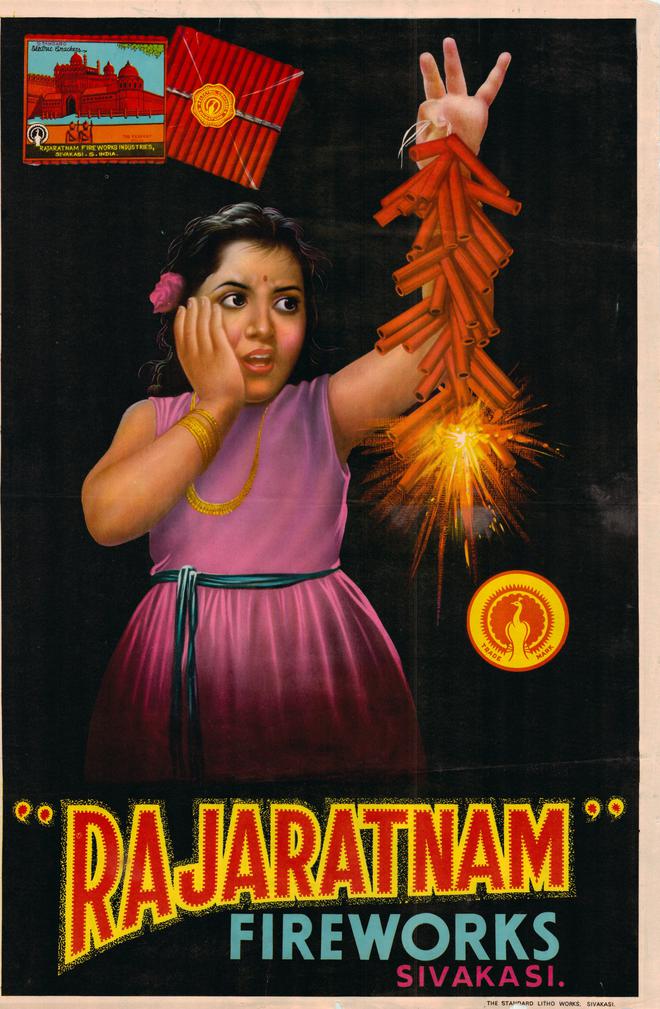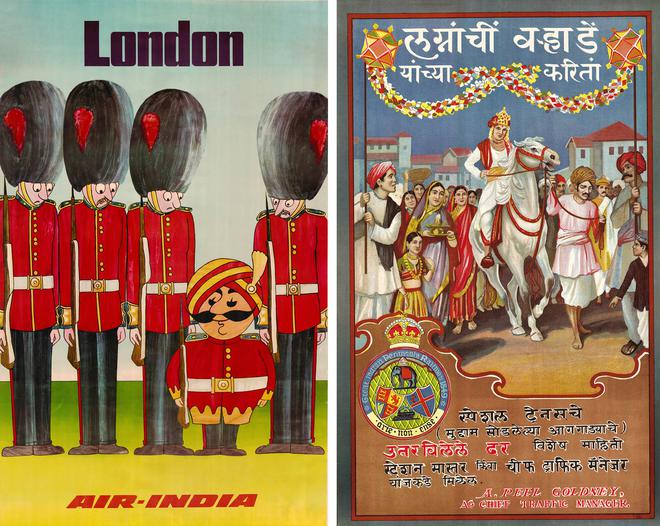
At a time when it is unexpected to even imagine the flags of India and Pakistan in one frame, a poster at an exhibition by Le Meridien, New Delhi, and the Archives of Tarun Thakral goes against the grain.
A hand-drawn print advertisement of the Scottish shipping company, Anchor Line, shows the flags against the backdrop of a sun-lit, red-orange sky and sketches of howdah-decked elephants, women balancing pots on their heads and a building that resembles a temple.
The word “relax”, placed between “India and Pakistan” and “Anchor Line”, may as well serve as cautionary advice.
“Anchor Line sailing services, bringing in passengers from Great Britain to India and Pakistan, was started in 1948. Their ships used to dock in Karachi and Bombay. This poster dates back to the ’50s and the artist has rightly captured the white folks on the ship,” says Tarun Thakral, executive director of CJ International Hotels and patron of the Archival Collection.

In all, 29 posters from his collection feature at the ongoing exhibition of hand-drawn Indian commercial posters from 1920s to 1960s — Journey Through Time: +1 Day, +1 Story. “Since it’s a leap year, we wanted people to see a rare collection of 28+1 original images from yesteryears. The exhibits transcend into a journey of the evolution of design aesthetics and rich visual history of India, engaging the onlookers with the charm of offset and lithographic techniques,” he says.

Tarun started collecting these posters some five years ago, a habit fuelled by his fascination for material that evokes nostalgia. “While curating the Heritage Transport Museum in Gurugram a decade ago, I stumbled upon some rare printed advertisements of petrol and oil companies. Later, I started searching for more advertisement posters; it was a task to find them in mint condition because most print material cannot withstand the vagaries of Indian weather. I met dealers and even participated in auctions to bring posters from the U.K. and U.S.,” he says.
“While curating the Heritage Transport Museum in Gurugram a decade ago, I stumbled upon some rare printed advertisements of petrol and oil companies. Later, I started searching for more advertisement posters; it was a task to find them in mint condition because most print material cannot withstand the vagaries of Indian weather. I met dealers and even participated in auctions to bring posters from the U.K. and U.S.,” he says.
A Poster Rajaratnam Fireworks picture, dating to the ’50s and published by The Standard Litho Works, Sivakasi, was acquired by Tarun at an auction in the U.S..

Divided into two sections on the basis of their size, 14 posters measure 30 by 40 inches, while the other 14 are 20X30 inches each. A portrait of magician P C Sorcar, published by Calcutta Art Studio, is the “plus-one poster” made of three 30X40-inch sheets. “Those days, big printing machines did not exist. So, this poster was made with three big sheets. Most publishing houses, which printed these posters, have now shut down; the Calcutta Art Studio remains,” informs Tarun.

There are several posters of Air India, Air France and Indian Railways. A poster of Air India’s famous mascot — the stout, turbaned and moustached Maharaja — standing in the middle of four London guards is particularly amusing. “Air India’s mascot was first conceived in 1946 by Bobby Kooka, who was then the airline’s commercial director. Bobby served Air India for 35 years and is responsible for building the brand of Air India around Maharajah,” says Tarun.
Bobby and Jal Cowasji, Air India’s art director and publicity chief, went on to create enduring campaigns to launch and promote the home-grown airliner’s international flights. There is a poster by M.V. Dhurandhar too. He painted several ads for Great Indian Peninsular Railway and South India Railway. This poster is about special trains that could be arranged for marriages. The illustration has a bridegroom, with his brigade, on a white horse.
The retrospective also showcases print-advertisement posters of Vinolia soap by Ravi Varma, Eveready Battery Company, Inc., and Goodyear tyres. The posters, though not on sale, are estimated between $1,000 and $8,000. Who could have imagined they donned the walls and lamp posts of India from 1920s to 1960s.
At Atrium Lobby (Longitude), Hotel Le Meridien, Janpath; Till March 15; 9am to 9pm.







